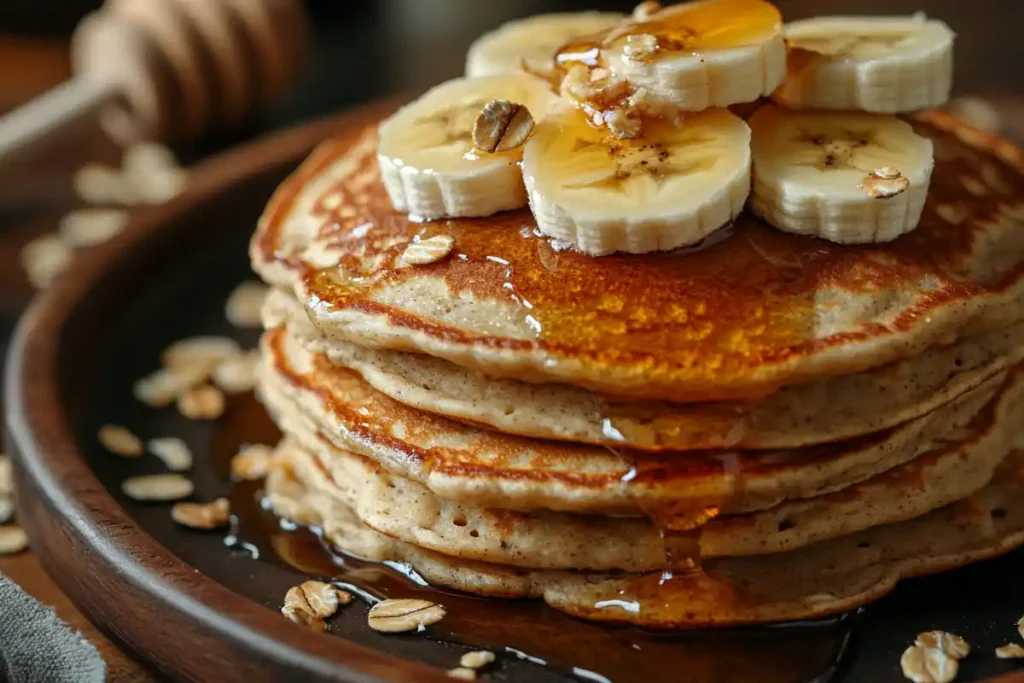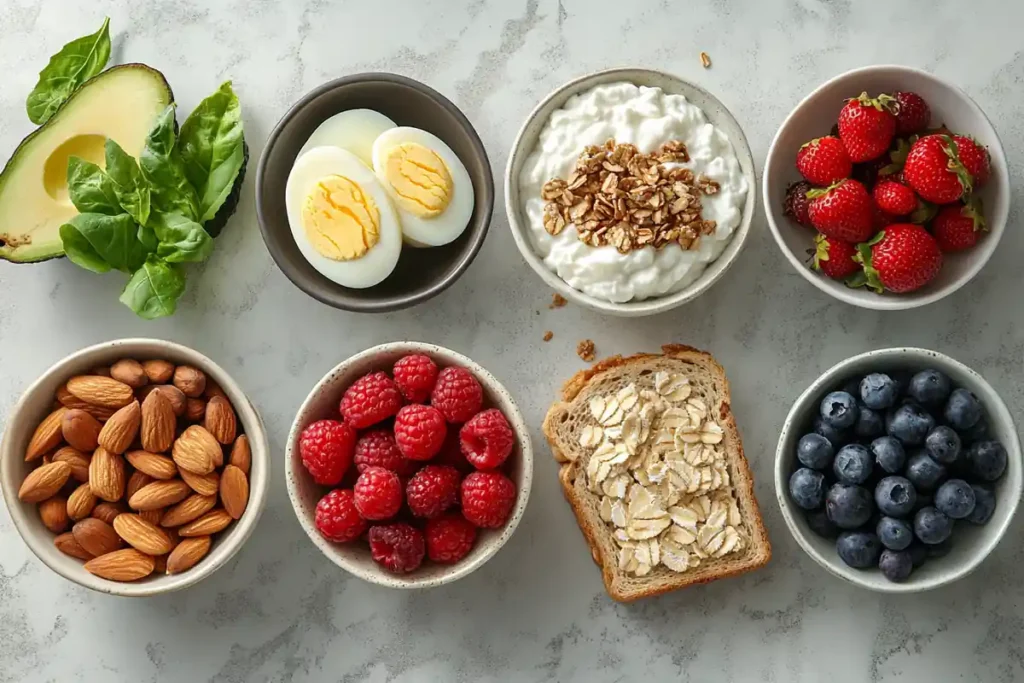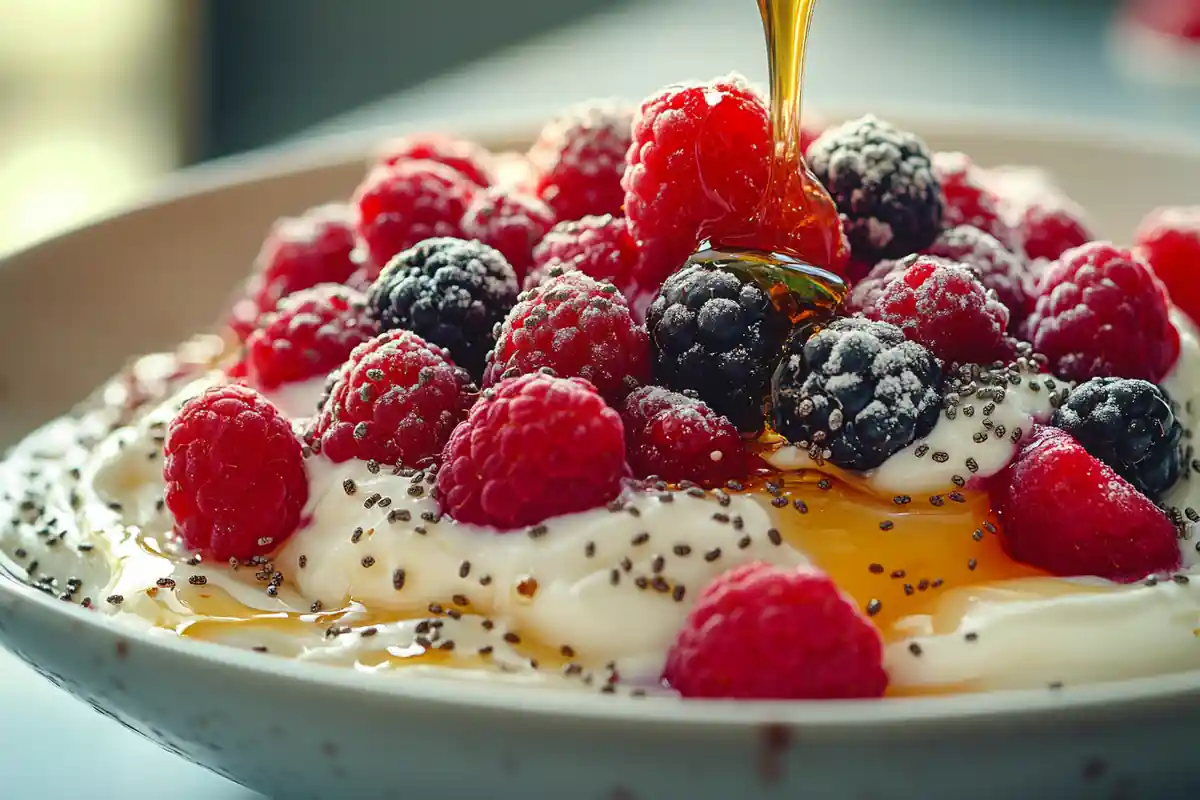A low calorie breakfast is the perfect way to kick-start your morning with nutrient-dense, delicious meals that fuel your body without excess calories. Whether you’re aiming for weight loss, better digestion, or improved energy levels, choosing the right low calorie breakfast can make all the difference.
Eating a low calorie breakfast doesn’t mean sacrificing flavor. From high-protein egg dishes to fiber-rich oatmeal bowls, this guide will show you easy, satisfying recipes that keep you full and help maintain a healthy lifestyle. Plus, we’ll explore meal-prepping tips, essential ingredients, and expert advice to make every morning effortless.
If you’re looking for the best low calorie breakfast options, you’re in the right place! Let’s dive into these tasty and healthy breakfast ideas to transform your mornings.
Let’s dive into the best low calorie breakfast ideas to transform your mornings!
Table of Contents
1: Understanding Low-Calorie Breakfasts
What is a Low-Calorie Breakfast?
A low-calorie breakfast is a meal that typically contains under 400 calories, focusing on nutrient-dense ingredients. Instead of empty carbs and sugary foods, these meals balance protein, fiber, and healthy fats to keep you full and satisfied.
The key is choosing whole, unprocessed foods while avoiding hidden sugars and excessive fats. Think oatmeal with fruit, Greek yogurt with nuts, or egg whites with veggies—meals that deliver maximum nutrition with minimal calories.
Benefits of Eating a Low-Calorie Breakfast
Eating a low-calorie breakfast isn’t just about cutting calories; it’s about making smart food choices that support your overall health. Here’s why it matters:
✅ Boosts metabolism – A nutritious breakfast jumpstarts your metabolism, helping you burn more calories throughout the day.
✅ Supports weight loss – Research shows that eating a protein- and fiber-rich breakfast reduces overall calorie intake by curbing cravings.
✅ Improves energy levels – Whole foods provide steady energy without sugar crashes.
✅ Enhances focus and productivity – A well-balanced breakfast fuels the brain, improving concentration and performance.
Common Misconceptions About Low-Calorie Breakfasts
🚫 “Low-calorie means less filling.” – Not true! The right balance of protein, fiber, and healthy fats ensures satiety without excess calories.
🚫 “Skipping breakfast helps with weight loss.” – Actually, skipping meals often leads to overeating later in the day, making weight loss harder.
🚫 “All breakfast foods labeled ‘healthy’ are low-calorie.” – Many so-called “healthy” breakfast foods (like granola and smoothies) are loaded with hidden sugars, leading to weight gain instead of loss.
2: Best Ingredients for a Low-Calorie Breakfast
When it comes to crafting a low-calorie breakfast, ingredient selection is key. The goal is to choose foods that are nutrient-dense, filling, and delicious while keeping calorie counts low. Let’s break down the best options for a satisfying yet healthy morning meal.
Protein-Packed Ingredients for Satiety
Protein is essential for fullness and muscle maintenance. It helps curb cravings and keeps you feeling satisfied for hours. Some excellent low-calorie, high-protein choices include:
- Egg whites – High in protein, low in fat, and extremely versatile.
- Greek yogurt (unsweetened) – Packed with probiotics, calcium, and protein.
- Cottage cheese – A great source of slow-digesting protein.
- Tofu – Perfect for plant-based eaters looking for a protein boost.
Adding lean proteins to your low-calorie breakfast can keep you energized throughout the day.
Fiber-Rich Foods for Digestion
Fiber plays a huge role in digestion, gut health, and satiety. It slows digestion and prevents hunger spikes. Some fiber-rich options include:
- Oatmeal – A classic choice that provides complex carbs and soluble fiber.
- Chia seeds & flaxseeds – High in omega-3s and fiber, great for thickening smoothies or adding to yogurt.
- Whole grains (quinoa, whole wheat bread, brown rice) – Keep you full longer than refined grains.
- Berries (blueberries, raspberries, strawberries) – Low in calories but high in fiber and antioxidants.
Pairing fiber with protein in your breakfast helps control blood sugar and prevents mid-morning energy crashes.
Healthy Fats for Sustained Energy
Not all fats are bad! Healthy fats provide lasting energy, improve brain function, and help with nutrient absorption. The best low-calorie fat sources include:
- Avocados – Packed with healthy monounsaturated fats.
- Nuts (almonds, walnuts, pistachios) – Great for adding crunch and heart-healthy benefits.
- Seeds (pumpkin, sunflower, sesame) – Provide a mix of fiber, protein, and good fats.
Try an avocado toast on whole-grain bread with a sprinkle of seeds for a nutritious and filling low-calorie breakfast. You can check out this Avocado Toast Recipe Guide for more ideas.
Low-Calorie Fruits and Vegetables to Add
Fruits and veggies add volume to your meals without excess calories. They’re rich in vitamins, minerals, and antioxidants. Some top choices:
- Leafy greens (spinach, kale, arugula) – Great for egg scrambles or smoothies.
- Tomatoes & bell peppers – Perfect for adding color and flavor to omelets.
- Bananas – A good source of potassium and natural sweetness for oats or smoothies.
By combining protein, fiber, healthy fats, and nutrient-rich produce, you can create a low-calorie breakfast that is both satisfying and beneficial for your health.
3: 10 Delicious Low-Calorie Breakfast Recipes

Now that we know the best ingredients, let’s put them together into quick, easy, and delicious low-calorie breakfast recipes.
Easy and Quick Breakfasts (Under 250 Calories)
1. Greek Yogurt with Berries and Honey
- ½ cup unsweetened Greek yogurt
- ¼ cup mixed berries
- 1 tsp honey (optional)
- 1 tbsp chia seeds for fiber
2. Avocado Toast on Whole-Grain Bread
- 1 slice whole wheat bread
- ¼ avocado, mashed
- A pinch of salt, pepper, and red pepper flakes
More avocado toast ideas can be found in this Avocado Toast Recipe Guide.
Protein-Rich Breakfasts for Fullness
3. Egg White Omelet with Spinach and Mushrooms
- 4 egg whites
- ½ cup spinach
- ¼ cup sliced mushrooms
- A sprinkle of feta cheese (optional)
4. Cottage Cheese and Banana Pancakes
- ½ cup cottage cheese
- 1 banana
- 2 tbsp oat flour
- 1 egg
- Blend and cook like pancakes!
Make-Ahead Low-Calorie Breakfasts
5. Overnight Oats with Almond Milk and Chia Seeds
- ½ cup rolled oats
- 1 tbsp chia seeds
- ½ cup almond milk
- 1 tsp cinnamon
- Let it sit overnight and enjoy cold or warm!
6. Smoothie Bowl with Berries and Protein Powder
- 1 scoop protein powder
- ½ cup frozen berries
- ½ cup almond milk
- 1 tbsp flaxseeds
High-Volume, Low-Calorie Options
7. Zucchini and Egg Muffins
- 2 eggs
- ½ cup grated zucchini
- ¼ cup cheese
- Bake in muffin tins for an easy grab-and-go meal!
8. High-Fiber Cereal with Skim Milk
- 1 cup bran flakes or whole-grain cereal
- ½ cup skim milk
- 1 tbsp almonds for crunch
Warm and Comforting Low-Calorie Breakfasts
9. Quinoa and Pear Breakfast Bake
- ½ cup cooked quinoa
- ½ pear, sliced
- 1 tsp cinnamon
- Bake for 15 minutes for a warm, fiber-rich breakfast.
10. Oatmeal with Cinnamon and Almond Butter
- ½ cup rolled oats
- 1 cup water or almond milk
- ½ tsp cinnamon
- 1 tsp almond butter for a nutty, satisfying taste.
These 10 easy recipes prove that a low-calorie breakfast can be delicious, filling, and satisfying. Whether you’re looking for a quick meal, high-protein option, or make-ahead recipe, there’s something for everyone!
4: Tips for Sticking to a Low-Calorie Breakfast Routine
Sticking to a low-calorie breakfast routine doesn’t have to be a struggle. With the right strategies, you can make healthy choices consistently without feeling deprived. Here are some simple yet effective tips to help you stay on track.
Meal Prepping for a Healthy Start
Planning ahead is one of the best ways to ensure you stick to your low-calorie breakfast goals. Try these meal-prepping hacks:
- Make-ahead meals: Overnight oats, egg muffins, and smoothie packs save time in the morning.
- Batch cooking: Prepare a large batch of oatmeal or quinoa breakfast bowls and portion them out for the week.
- Pre-cut ingredients: Chop fruits, portion yogurt, or store nuts and seeds in small containers for quick assembly.
A little preparation goes a long way in ensuring you never skip breakfast or reach for unhealthy options.
How to Avoid Common Pitfalls
Even with good intentions, it’s easy to make mistakes when trying to eat a low-calorie breakfast. Here’s how to avoid them:
❌ Adding too much sugar: Many breakfast foods (granola, flavored yogurt) contain hidden sugars. Opt for unsweetened options and use natural sweeteners like honey or fruit.
❌ Skipping protein: Carbs alone won’t keep you full. Always pair fiber-rich carbs with protein to prevent cravings.
❌ Choosing processed foods: Pre-packaged “healthy” cereals and bars can be deceptive. Stick to whole, minimally processed foods for the best nutrition.
Eating Out? How to Choose a Low-Calorie Breakfast
Eating out doesn’t mean you have to abandon your healthy eating habits. Use these smart strategies:
- Ask for modifications – Request whole-grain toast, egg whites, or unsweetened yogurt.
- Avoid excess toppings – Skip sugary syrups and creamy dressings that add unnecessary calories.
- Watch portion sizes – Many restaurant breakfasts are oversized. Share a dish or take half to go.
With these tips, you can enjoy a delicious low-calorie breakfast anywhere—whether at home or on the go!
5: FAQs on Low-Calorie Breakfasts

Have more questions about low-calorie breakfasts? Here are some common questions and expert answers to help you make the best choices.
1. What are some filling low-calorie breakfast options?
Great question! The key is high-protein, fiber-rich foods that keep you full. Some options include:
- Oatmeal with chia seeds and Greek yogurt
- Egg whites with spinach and whole wheat toast
- Cottage cheese with berries and almonds
2. Can I have a low-calorie breakfast that is also high in protein?
Absolutely! Some high-protein, low-calorie breakfasts include:
- Scrambled egg whites with smoked salmon
- Tofu and vegetable stir-fry
- A smoothie with protein powder, banana, and almond milk
3. Are smoothies a good choice for a low-calorie breakfast?
Yes—but be mindful of ingredients! Avoid excessive fruit juice, added sugars, and high-calorie mix-ins. A balanced smoothie should contain:
- A protein source (Greek yogurt or protein powder)
- A fiber source (chia seeds or spinach)
- A natural sweetener (berries or banana)
4. How can I make my low-calorie breakfast more exciting?
Variety is key! Try experimenting with new flavors, spices, and ingredients. You can also explore different breakfast styles, such as savory grain bowls, smoothie bowls, or international breakfast recipes.
For more delicious recipes, check out our Avocado Toast Recipe Guide for more inspiration.
That wraps up our complete guide to low-calorie breakfasts! Whether you’re looking for quick meal ideas, ingredient swaps, or healthy eating tips, we hope this guide helps you start your day right. Now, go enjoy a delicious and nutritious breakfast! 🚀
6: The Role of Hydration in a Low-Calorie Breakfast
Drinking enough water is just as important as eating the right foods when it comes to a low-calorie breakfast. Hydration helps with digestion, metabolism, and overall energy levels—all of which are key to a healthy morning routine.
Why Hydration Matters for a Low-Calorie Breakfast
Starting your day with a glass of water before breakfast can:
✅ Boost metabolism – Studies show that drinking water increases calorie burn by up to 30% for about an hour.
✅ Improve digestion – Water helps break down food and supports gut health.
✅ Prevent overeating – Sometimes, thirst is mistaken for hunger, leading to unnecessary snacking.
✅ Support energy levels – Dehydration can make you feel sluggish and tired, even if you’ve eaten.
Best Hydration Options for Breakfast
Instead of sugary drinks that add unnecessary calories, opt for these healthy, low-calorie beverages:
- Water with lemon – Refreshing and packed with vitamin C.
- Herbal teas (peppermint, ginger, green tea) – These help with digestion and metabolism.
- Black coffee – A great low-calorie option that may enhance fat-burning (but skip the sugar and heavy cream!).
- Coconut water – A natural source of electrolytes, ideal after a morning workout.
Pro Tip: If you often wake up not feeling hungry, try hydrating first. Sometimes, drinking a glass of water can naturally kickstart your appetite and help you enjoy a nutrient-rich, low-calorie breakfast.
7: Customizing Low-Calorie Breakfasts for Different Diets
A low-calorie breakfast can be adapted to any dietary preference. Whether you’re following keto, vegan, gluten-free, or intermittent fasting, you can still enjoy healthy and delicious morning meals.
Low-Calorie Keto Breakfasts (Low-Carb & High-Fat)
The keto diet focuses on low carbs, high fat, and moderate protein. A low-calorie breakfast on keto may include:
- Scrambled eggs with avocado and cheese
- Chia seed pudding with coconut milk
- Almond flour pancakes with sugar-free syrup
To keep calories in check, watch portion sizes—even healthy fats like nuts and cheese can add up quickly.
Low-Calorie Vegan Breakfasts (Plant-Based & Nutrient-Dense)
A vegan low-calorie breakfast should include plant-based proteins and fiber-rich foods. Try these options:
- Oatmeal with flaxseeds and almond butter
- Tofu scramble with spinach and mushrooms
- Smoothie with banana, protein powder, and almond milk
For extra protein, add chia seeds, hemp seeds, or a scoop of plant-based protein powder.
Low-Calorie Gluten-Free Breakfasts (Great for Digestion)
Gluten-free diets avoid wheat, barley, and rye, but there are still plenty of nutritious low-calorie options:
- Quinoa porridge with cinnamon and berries
- Greek yogurt with nuts and honey
- Scrambled eggs with roasted sweet potatoes
When buying gluten-free cereals or granola, always check labels to avoid hidden sugars.
Low-Calorie Breakfasts for Intermittent Fasting (Breaking the Fast Right)
If you practice intermittent fasting (IF), your first meal should be nutrient-dense and balanced. Good options include:
- Egg and avocado toast on whole-grain bread
- A smoothie bowl with protein, fiber, and healthy fats
- Cottage cheese with walnuts and berries
Since fasting increases hunger, be mindful of portion sizes to avoid overeating after breaking your fast.
No matter what diet you follow, you can create a low-calorie breakfast that fits your lifestyle. The key is choosing whole, nutrient-dense foods that support your energy and health goals.
Looking for more creative breakfast ideas? Check out our Avocado Toast Recipe Guide for a simple, healthy meal option!
8: The Science Behind a Low-Calorie Breakfast and Weight Loss
A low-calorie breakfast isn’t just about cutting calories—it’s about making smart nutritional choices that support weight loss. But how does it actually work? Let’s break down the science behind a low-calorie breakfast and its effects on weight management.
How a Low-Calorie Breakfast Affects Metabolism
Your body needs energy to function, and breakfast plays a key role in kickstarting metabolism after an overnight fast. Eating a low-calorie breakfast with the right balance of protein, fiber, and healthy fats can:
✅ Increase calorie burn – Your body works harder to digest protein and fiber, which can boost metabolism.
✅ Prevent muscle loss – Skipping breakfast or eating too few calories can lead to muscle breakdown, slowing metabolism.
✅ Regulate blood sugar – A balanced meal in the morning helps prevent energy crashes and sugar cravings later.
The Role of Hunger Hormones in Weight Loss
Eating a low-calorie breakfast can help control hunger hormones, making it easier to manage your appetite throughout the day. The two main hormones involved are:
- Ghrelin (the hunger hormone): When you wake up, ghrelin levels are high. A balanced breakfast lowers ghrelin, reducing hunger and preventing overeating.
- Leptin (the fullness hormone): A well-balanced meal boosts leptin, signaling to your brain that you’re full.
Why Skipping Breakfast Can Backfire
Many people think skipping breakfast helps cut calories and lose weight faster, but studies show that it often has the opposite effect:
❌ Increased cravings: Skipping breakfast can lead to stronger cravings for high-calorie, sugary foods later in the day.
❌ Slower metabolism: Prolonged fasting can slow your body’s ability to burn calories efficiently.
❌ Higher risk of binge eating: Skipping meals often leads to overeating at lunch or dinner, making it harder to stay within a calorie deficit.
A low-calorie breakfast that is nutrient-dense, protein-rich, and satisfying is one of the best ways to support weight loss while keeping your energy levels high.
9: How to Build a Sustainable Low-Calorie Breakfast Habit

Making a low-calorie breakfast part of your daily routine is easier than you think. By focusing on simple, sustainable habits, you can ensure that healthy mornings become second nature.
Start Small and Keep It Simple
The key to long-term success is consistency. Instead of trying to overhaul your entire diet overnight, make gradual changes:
- Swap sugary cereals for oatmeal with fruit.
- Replace white bread with whole grain options.
- Add protein to your breakfast (eggs, yogurt, or nuts).
Plan Ahead to Avoid Unhealthy Choices
When mornings are rushed, it’s easy to grab a high-calorie, processed breakfast. That’s why meal prepping can be a game-changer:
- Prepare overnight oats or smoothie packs in advance.
- Batch cook egg muffins or protein pancakes for the week.
- Keep healthy grab-and-go options like Greek yogurt, fruit, and nuts on hand.
Find Variety to Keep It Interesting
Eating the same meal every morning can get boring. Try rotating different types of low-calorie breakfasts:
- Sweet: Oatmeal, smoothie bowls, or yogurt parfaits.
- Savory: Scrambled egg whites, avocado toast, or tofu scrambles.
- Grab-and-go: Protein bars, overnight oats, or banana pancakes.
Final Tip: Listen to Your Body
A low-calorie breakfast should leave you feeling satisfied and energized, not deprived. If you’re still hungry after eating, adjust portions or add more fiber and protein. Over time, your body will naturally adapt to healthier choices.
By following these simple habits, you can turn a low-calorie breakfast into a lifelong routine that supports your health and weight goals!
Conclusion: Make Low-Calorie Breakfasts a Daily Habit
A low-calorie breakfast is more than just a weight-loss strategy—it’s a way to fuel your body with the right nutrients, boost your energy, and set the tone for a healthy day. By choosing protein-rich, fiber-packed, and nutrient-dense ingredients, you can enjoy delicious and satisfying meals without overloading on calories.
We’ve covered everything from the best ingredients and recipes to meal-prepping tips and weight-loss science. Now, it’s up to you to put these strategies into action. Start small, experiment with new recipes, and most importantly, listen to your body’s needs.
Looking for more healthy breakfast ideas? Be sure to check out our Avocado Toast Recipe Guide for a simple and nutritious morning meal.
Remember, a low-calorie breakfast isn’t about restriction—it’s about making smarter, sustainable choices that support your health and well-being. Here’s to healthier mornings and a stronger you! 🚀

